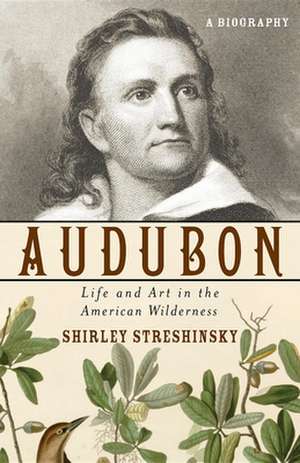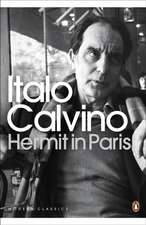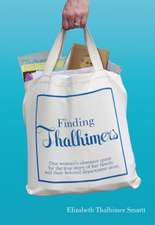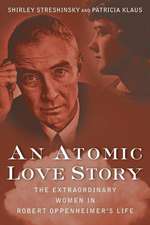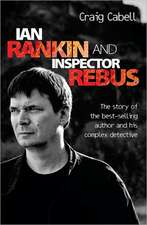Audubon: Life and Art in the American Wilderness
Autor Shirley Streshinskyen Limba Engleză Paperback – 2 sep 2013
In 1803, an eighteen-year-old West Indies–born Frenchman arrived in New York City, fleeing Napoleon’s conscription. His work would become inextricably entwined with the new world he so proudly adopted in his motto “America, my country.”
Inspired by the primeval forests and the vast flocks of birds that thrived in them, Audubon spent the next several decades of his life painstakingly documenting the birds of the American wilderness. He traveled the back roads and bayous, searching out and studying the birds that were his pastime and passion. He spent long, silent hours observing them in the wild. He was no amateur ornithologist; rather, he drew his birds from life, and his work always carried the line “drawn from nature by J. J. Audubon.”
Accompanied by his wife, Lucy, and their two sons, Audubon was able to challenge the world’s expectations and win. The story of this loving family’s long, profound struggle is as poignant and as relevant today as it was in the early decades of the nineteenth century.
Combining meticulous scholarship with the dramatic life story of a naturalist and pioneer, Audubon reexamines the artist's journals and letters to tell the story of Audubon's quest, the origins of the American spirit, and the sacrifice that resulted in one of the world's greatest bodies of art: The Birds of America.
Inspired by the primeval forests and the vast flocks of birds that thrived in them, Audubon spent the next several decades of his life painstakingly documenting the birds of the American wilderness. He traveled the back roads and bayous, searching out and studying the birds that were his pastime and passion. He spent long, silent hours observing them in the wild. He was no amateur ornithologist; rather, he drew his birds from life, and his work always carried the line “drawn from nature by J. J. Audubon.”
Accompanied by his wife, Lucy, and their two sons, Audubon was able to challenge the world’s expectations and win. The story of this loving family’s long, profound struggle is as poignant and as relevant today as it was in the early decades of the nineteenth century.
Combining meticulous scholarship with the dramatic life story of a naturalist and pioneer, Audubon reexamines the artist's journals and letters to tell the story of Audubon's quest, the origins of the American spirit, and the sacrifice that resulted in one of the world's greatest bodies of art: The Birds of America.
| Toate formatele și edițiile | Preț | Express |
|---|---|---|
| Paperback (1) | 119.98 lei 22-36 zile | |
| Turner – 2 sep 2013 | 119.98 lei 22-36 zile | |
| Hardback (1) | 252.01 lei 22-36 zile | |
| Turner – 2 sep 2013 | 252.01 lei 22-36 zile |
Preț: 119.98 lei
Nou
Puncte Express: 180
Preț estimativ în valută:
22.96€ • 23.84$ • 19.15£
22.96€ • 23.84$ • 19.15£
Carte disponibilă
Livrare economică 03-17 martie
Preluare comenzi: 021 569.72.76
Specificații
ISBN-13: 9781618580252
ISBN-10: 1618580256
Pagini: 528
Dimensiuni: 140 x 216 x 30 mm
Greutate: 0.66 kg
Editura: Turner
ISBN-10: 1618580256
Pagini: 528
Dimensiuni: 140 x 216 x 30 mm
Greutate: 0.66 kg
Editura: Turner
Cuprins
Foreword
Acknowledgments
BOOK ONE
The Woodsman
BOOK TWO
The Artist and Naturalist
Bibliography
Notes
Index
Acknowledgments
BOOK ONE
The Woodsman
BOOK TWO
The Artist and Naturalist
Bibliography
Notes
Index
Recenzii
"A scintillating biography, a richly detailed story of romance, separation, and struggle." —Publishers Weekly
"Streshinsky's riveting new biography . . . infuses this man's career with the same vigorous spark of real life that Audubon uniquely brought to the depiction of America's birds." —Los Angeles Times
"Vividly evokes what it was like to settle in new frontier communities, to travel in America and overseas and to try to earn a living in the economically uncertain early years of the nineteenth century." —New York Times Book Review
"A solid narrative biography, the first popular life of the artist in a quarter century . . . The Audubon depicted here is buoyant, gifted, and vain." —Boston Globe
"A portrait as vivid as any of Audubon's." —San Francisco Chronicle
"Streshinsky's riveting new biography . . . infuses this man's career with the same vigorous spark of real life that Audubon uniquely brought to the depiction of America's birds." —Los Angeles Times
"Vividly evokes what it was like to settle in new frontier communities, to travel in America and overseas and to try to earn a living in the economically uncertain early years of the nineteenth century." —New York Times Book Review
"A solid narrative biography, the first popular life of the artist in a quarter century . . . The Audubon depicted here is buoyant, gifted, and vain." —Boston Globe
"A portrait as vivid as any of Audubon's." —San Francisco Chronicle
Notă biografică
Shirley Streshinsky is the critically acclaimed author of three works of nonfiction and four historical novels. As a journalist and travel essayist, she has written extensively for Redbook, Glamour, Preservation, American Heritage, The American Scholar, and Condé Nast Traveler and has been featured on NPR. She is the recipient of the Society of Magazine Writers’ Award for Excellence and the National Council for the Advancement of Education Writing Award. She was married to the late photojournalist Ted Streshinsky and has three grown children. She lives in Kensington (Berkeley), California.
Extras
A young Man of Seventeen sent to America to Make Money (for such was My Father’s Wish) brought up in France in easy Circumstance who had never thought on the Want of an article.
John Audubon wrote those words in his journal while floating down the Mississippi River on a flatboat; by then, he had been in America for fifteen years. His memory was not precise; in fact, he had turned eighteen, not seventeen, in the spring of 1803, before sailing that autumn from France to New York. He was incorrect about his father’s motives, as well. Jean Audubon did not send his only son to America to “Make Money.” He sent him there to keep him out of harm’s way.
That same year, 1803, Meriwether Lewis and William Clark were preparing to leave on the explorations that would chart the vast, wild continent that lay before the young man of eighteen: America. A land of promise, as Saint-Domingue in the West Indies had been for Audubon’s father. America, a safe haven from Napoleon Bonaparte, whose need for soldiers had become insatiable. When the American president Thomas Jefferson convinced Napoleon to sell 828,000 square miles of French-claimed territory, this Louisiana Purchase instantly increased the size of the country by 140 percent—and worked to the young Frenchman’s advantage as well, since he could claim to have been born in the United States.
It had not been easy to leave the country house in Couëron, not easy to leave France. The pain of that parting remained so vividly etched in his memory that years later he would write, “When, for the first time . . . I left my father, and all the dear friends of my youth, to cross the great ocean . . . my heart sunk within me . . . The lingering hours were spent in deep sorrow . . . My affections were with those I had left behind, and the world seemed to me a great wilderness.”2 Homesickness was compounded by mal de mer; the sea made him sick, and it always would. He complained that he could not draw while at sea because of a “giddiness” which seldom left him.
John Audubon wrote those words in his journal while floating down the Mississippi River on a flatboat; by then, he had been in America for fifteen years. His memory was not precise; in fact, he had turned eighteen, not seventeen, in the spring of 1803, before sailing that autumn from France to New York. He was incorrect about his father’s motives, as well. Jean Audubon did not send his only son to America to “Make Money.” He sent him there to keep him out of harm’s way.
That same year, 1803, Meriwether Lewis and William Clark were preparing to leave on the explorations that would chart the vast, wild continent that lay before the young man of eighteen: America. A land of promise, as Saint-Domingue in the West Indies had been for Audubon’s father. America, a safe haven from Napoleon Bonaparte, whose need for soldiers had become insatiable. When the American president Thomas Jefferson convinced Napoleon to sell 828,000 square miles of French-claimed territory, this Louisiana Purchase instantly increased the size of the country by 140 percent—and worked to the young Frenchman’s advantage as well, since he could claim to have been born in the United States.
It had not been easy to leave the country house in Couëron, not easy to leave France. The pain of that parting remained so vividly etched in his memory that years later he would write, “When, for the first time . . . I left my father, and all the dear friends of my youth, to cross the great ocean . . . my heart sunk within me . . . The lingering hours were spent in deep sorrow . . . My affections were with those I had left behind, and the world seemed to me a great wilderness.”2 Homesickness was compounded by mal de mer; the sea made him sick, and it always would. He complained that he could not draw while at sea because of a “giddiness” which seldom left him.
Descriere
John James Audubon--the dreamer, vagabond, romantic, and genius--was the archetype of the passionate and steadfast frontiersman. Combining meticulous scholarship with the dramatic life story of a naturalist and pioneer, Streshinsky reexamines the artist's journals and letters to tell the story of Audubon's quest, the origins of the American spirit, and the sacrifice that resulted in one of the world's greatest bodies of art: "The Birds of America". 22 illustrations.
